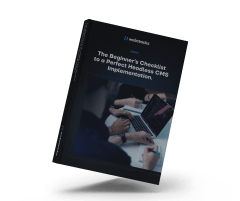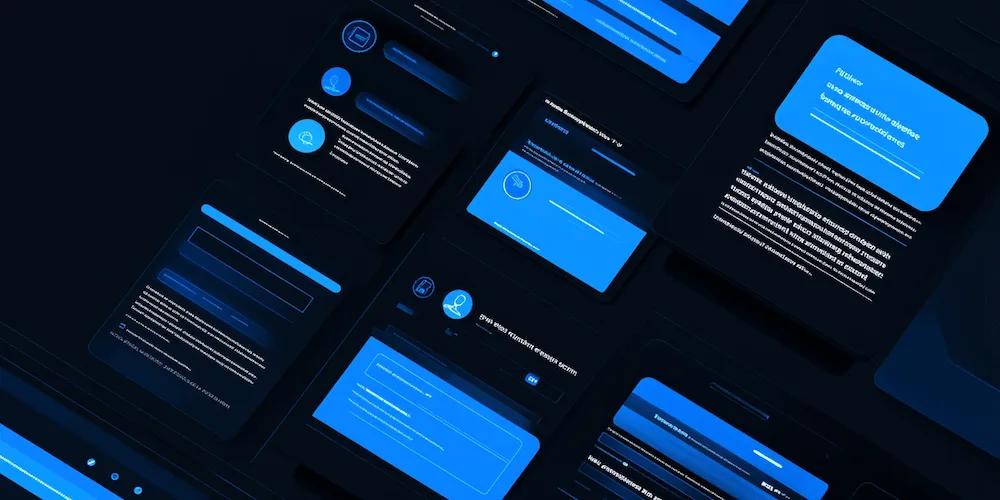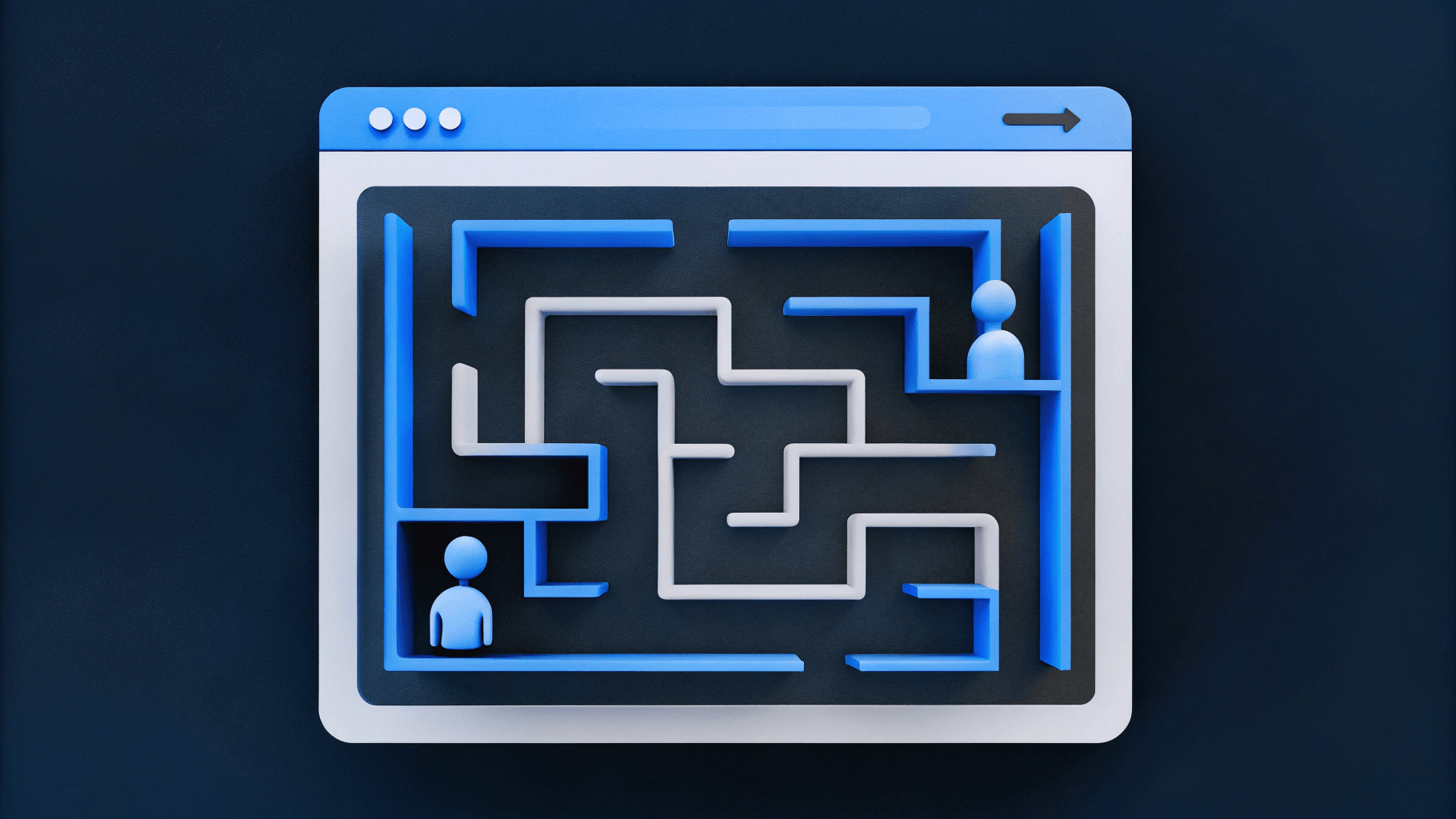To design products that appeal to users, you need insights from effective user research for UX design. By understanding your users' needs and behaviors, you can create experiences that satisfy their expectations.
Importance of User Research in UX Design
Conducting user research ensures design decisions are based on insights rather than assumptions. It allows you to:
- Understand user needs and pain points
- Create empathy for your users
- Validate design concepts early through methods like User Acceptance Testing
- Reduce the risk of developing ineffective products
- Save time and resources by preventing costly redesigns
By focusing on user needs, you can design experiences that are both useful and enjoyable. For SaaS products, applying effective strategies for improving SaaS UX is essential to meet user expectations.
Exploring Types of User Research Methods
There are various methods to gather user insights, each offering different benefits:
Qualitative Methods:
- User Interviews: One-on-one conversations to explore user behaviors and motivations in depth.
- Usability Testing: Observe users interacting with your product to identify usability issues.
- Field Studies: Watch users in their natural environment to see how they use products in real-life contexts.
Quantitative Methods:
- Surveys: Collect numerical data from a larger audience to uncover patterns and trends.
- Analytics: Analyze user behavior data from your website or app to understand usage patterns.
- A/B Testing: Compare two versions of a design to determine which one performs better based on user interactions.
Understanding the importance of keyword research can also help you identify common terms and topics users are interested in, which can inform content and feature decisions.
Combining these methods gives you a thorough understanding of your users and helps you make informed design decisions. Additionally, applying best practices for MedTech UX is essential when designing for the healthcare sector.

Planning and Preparing for User Research
Effective user research starts with careful planning to ensure your efforts yield valuable insights for your design decisions.
Defining Your Research Goals and Objectives
Begin by clearly outlining what you want to learn from your research. Ask yourself:
- What specific questions are you trying to answer?
- How will these insights inform your design process?
Clearly defined objectives focus your research and ensure you gather relevant data.
Selecting the Right Research Method
Choose research methods that align with your goals and resources. Decide if you need qualitative insights, quantitative data, or both. Common methods include:
- User Interviews: One-on-one conversations to gain in-depth understanding of user behaviors and motivations.
- Surveys: Collect quantitative data from a larger audience to identify patterns.
- Usability Testing: Observe users interacting with your product to uncover usability issues.
- Field Studies: Watch users in their natural environment to gather contextual insights.
Select methods that address your research questions and fit your timeline and budget.
Recruiting the Right Participants
Identify and recruit participants who represent your target audience. Aim for a diverse sample to gather a range of perspectives. Consider:
- Defining participant criteria based on your user profiles.
- Using recruitment tools or services to find suitable participants.
- Offering incentives to encourage participation.
Ensuring your participants reflect your intended users enhances the relevance of your findings.
Creating Research Materials
Prepare all necessary materials before conducting your research. This may include:
- Interview Guides: A list of questions and topics to cover during interviews.
- Survey Questionnaires: Well-crafted questions that effectively gather the information you need.
- Usability Test Scenarios: Tasks for users to complete during testing sessions.
Thorough preparation helps sessions run smoothly and ensures you collect the data required to meet your research objectives.
Conducting User Research
Gather meaningful insights by effectively conducting user research: carefully moderating sessions, accurately collecting data, and following ethical practices.
Effectively Moderating User Research Sessions
When moderating sessions, guide participants without influencing their responses. Create a comfortable environment for honest feedback. Listen actively and observe their interactions.
Ask open-ended questions to encourage elaboration. Remain neutral and avoid leading questions that could bias responses.
Collecting and Recording Data Accurately
Accurate data collection is essential. Document key observations, quotes, and behaviors during each session. With participants' permission, record sessions for later review.
Take thorough notes to capture subtle nuances. Systematically organize data to simplify analysis and identify patterns across participants.
Ensuring Ethical Research Practices
Ethical practices are fundamental. Always obtain informed consent before starting sessions. Explain the research purpose, data usage, and assure privacy and confidentiality. Be transparent about recording methods. Respect participants' rights to withdraw without negative consequences. Upholding ethical standards builds trust and maintains research integrity. Adopting a collaborative design approach within your team ensures that ethical considerations are upheld throughout the research and design process.
Analyzing User Research Data
Analyzing your user research data involves applying appropriate techniques to both qualitative and quantitative data.
Applying Qualitative Data Analysis Techniques
Qualitative data, like interview transcripts and notes, provide in-depth insights. Analyze qualitative data by:
- Thematic Analysis: Code data to identify recurring themes in needs, pain points, and preferences.
- Affinity Mapping: Group observations based on similarities to uncover relationships and themes.
- Persona Development: Create user personas representing different user types to aid in empathy and inform design decisions.
Focus on what users say and do. Observing behaviors and statements helps address discrepancies between intentions and actions.
Applying Quantitative Data Analysis Techniques
Quantitative data offers measurable insights. Analyze quantitative data by:
- Statistical Analysis: Interpret survey results and usability metrics. Calculate averages, percentages, and more.
- Benchmarking: Compare data against industry standards or previous data.
- Data Visualization: Use charts and graphs to represent data, making trends and patterns easier to spot.
Ensure sample sizes are sufficient for statistical significance, and use randomization to minimize biases.
Identifying Patterns and Insights from Data
Analyzing both qualitative and quantitative data helps identify patterns:
- Identify Common Themes: Note consistent feedback and recurring issues.
- Prioritize Needs: Determine the most critical user needs based on frequency and impact.
- Inform Design Decisions: Use insights to map features to needs, improve usability, and enhance user experience.
Thorough analysis enables informed, user-centered design decisions that address real problems. For more specific industry insights, refer to resources like this Fintech UX design guide.

Presenting User Research Findings
Effectively sharing your findings informs your design process and aligns your team.
Creating Compelling Research Reports
Create concise and clear reports. Focus on key findings and highlight patterns. Use visuals like user journey maps or personas to illustrate user behaviors and needs. Keeping reports straightforward ensures they are accessible and actionable.
Communicating Research Insights to Stakeholders
Communicate findings to stakeholders to align everyone around user-centered solutions. Present insights in a way that connects with your audience. Use simple language and avoid jargon. Visual aids like charts or prototypes make complex data digestible. Involving stakeholders fosters collaboration and supports buy-in for design decisions.
Making Data-Driven Design Decisions
Use research findings to inform design choices. Map features to user needs identified in your research, and consider integrating a data-driven SEO strategy to increase user engagement. Prioritize changes based on their impact on users. Grounding decisions in real data leads to effective, user-centered designs.
Implementing User Research into UX Design
Integrate user research into your UX design process to create products that meet user needs.
Incorporating User Feedback into Your Design
User feedback guides design decisions. Apply findings directly:
- Map Features to Needs: Align features with identified user needs to address real problems.
- Develop Design Guidelines: Use insights to inform design principles, maintaining focus on user needs and ensuring compliance with web accessibility best practices.
- Create User Stories and Scenarios: Craft narratives of typical interactions to keep the team aligned on user expectations.
Implementing Iterative Design and Testing
Design is iterative. Continuously test and refine designs based on user feedback. Engaging in collaborative design system development can streamline this process and ensure consistency across your product:
- Prototype Testing: Build prototypes and test with users to identify usability issues early.
- Usability Testing: Regularly conduct tests to find obstacles users face, allowing adjustments before development.
- Refine Designs: Use testing insights to improve designs. Iteration enhances usability and satisfaction.
Evaluating the Impact of Your Design Changes
Evaluate how design changes affect user experience to ensure positive outcomes:
- Analyze User Behavior: Use analytics to observe user interaction after changes. Look for improvements in key metrics.
- Gather Post-Launch Feedback: Collect feedback post-release to understand reception. Surveys and interviews provide direct user insights.
- Prioritize Future Improvements: Decide which areas need enhancement based on impact. Focus on features that affect user satisfaction.
Implementing a composable architecture can enhance flexibility and scalability, allowing for easier evaluation and integration of design changes. Transitioning to a headless CMS can significantly improve site performance and user experience, making it easier to implement and test design changes.
By integrating user research into your UX design process and ensuring performant web development, you can create products that meet user needs.
Advanced Topics in User Research
As user research evolves, adapting to new technologies and remote methods is essential for UX designers.
Utilizing Remote User Research Techniques
Conducting research remotely lets you reach participants anywhere. Tools like Maze and UsabilityHub support remote usability testing. Methods include online surveys, video interviews, and remote tests, helping gather insights without geographical constraints.
Utilizing remote research techniques is essential in today's digital landscape. When combined with efforts in transforming websites into products, it allows businesses to create more engaging and user-centered experiences.
This approach broadens your participant pool and can be more convenient for users, leading to richer feedback.
Leveraging Technology for User Research
Using technology streamlines research and enhances collaboration. Platforms like User Interviews help recruit participants. Survey tools like SurveyMonkey and Google Forms simplify data collection and analysis. For collaborative analysis, tools like Miro and FigJam help teams visualize and synthesize findings. Utilizing technology makes research more efficient and uncovers deeper insights.
By integrating user research into every stage of your UX design process, you ensure your products meet real user needs and behaviors. Effective user research is an ongoing commitment to understanding your users. Embrace these practices to create meaningful experiences that resonate with your audience.
Here at Webstacks, we help many companies level up their online presence through next-gen solutions for websites.
If you want to learn more about this or any other topic, feel free to reach out to us!




